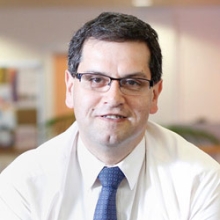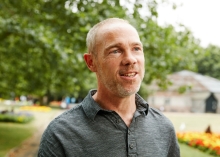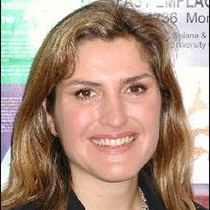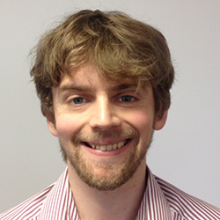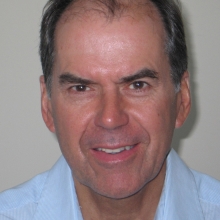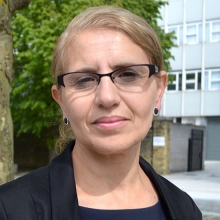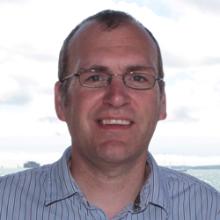
Our research focuses on the drivers of risk, seeking more effective ways of managing risk and building resilience.
Our research aims to:
- Examine risks, seeking improved risk management and resilience
- Facilitate the transfer of knowledge between academics and practitioners
- Disseminate information about new technologies and methodologies
- Provide updates on research funding sources, assist with proposal drafting
- Encourage multidisciplinary networking, via symposia and media activities
- Engage citizens, businesses, and policy makers, for actions to reduce risks and increase resilience
Case studies

Caribbean hurricanes
Many of our researchers were involved in examining the impacts of Hurricane Maria within Dominica, a small-island developing state. That research provided guidelines on ‘Building Back Better’ – not just reconstructing with better buildings and infrastructure, but also rebuilding in safer locations.
The Dominica post-hurricane research also highlighted that a key component of disaster risk management – beyond reducing hazard severity and the degree of exposure or vulnerability – is to improve coping capacity after a hazard event, hence our group’s interest in improving community resilience.
Mozambique search-drones
Our staff are carrying out pioneering research into the uses of drones in disaster management, recently signing an MoU with the World Food Programme.
Research impact
The Risk and Resilience sector is very diverse, matched by the wide variety of research projects and consultancy that we carry out. We have a multi-disciplinary international outlook, working with organisations from the UK and overseas, with a focus on locations where socio-economic constraints make communities more at risk from hazard events.
Our group has a track record in providing research and knowledge transfer services to many organisations, including:
- World Health Organisation
- UK Department for Environment Food and Rural Affairs
- UK Department for Levelling Up, Housing and Communities
- UK Ordnance Survey
- UK Satellite Applications Catapult
- Oil Spill Response Ltd
- Hampshire Fire and Rescue Service
- Hampshire & IoW Local Resilience Forum
Members
Through our research, we collaborate with many researchers – spanning all five of our research themes. Many of our members teach on courses in the sector, including MSc Risk, Crisis and Resilience Management and MSc Crisis and Disaster Management – which includes an annual SimEx international disaster response simulation exercise.
Alongside the United Nations Institute for Training and Research, via the UKSA-funded CommonSensing project, our members have developed and delivered online training materials for uses of GIS and satellite remote sensing in disaster risk management, for the governments of Fiji, Vanuatu and the Solomon Islands.
Practitioners and Pracademics
- Naomi Morris (World Health Organisation)
- Phil Crook (Fire & Rescue consultant)
- Toby Meredith (ServeOn NGO)
- Dr Rob Holland (Oil Spill Response Ltd)
- Katherine Haggerty (Foreign, Commonwealth & Development Office)
- Ralph Aytoun (Humanitarian OpenStreetMap Team)
- Tom Hales (Technical Rescue International Ltd)
- Alan Wilkins (Mercari insurance)
- Dr Advait Gandhe (Queen Alexandra Hospital)
- Eleanor Stack (British Red Cross)
Postdoctoral and visiting and Research Fellows
- Dr Ehsam Khalefa (2023-2025) – awarded a NERC-funded Daphne Jackson Trust Scholarship: Uses of Satellite Remote Sensing to Monitor Impacts of Climate and Land Use Changes on the Slopes of Kilimanjaro (Supervisors: Nick Pepin and Richard Teeuw).
- Dr Nasos Argyriou (FORTH Research Institute, Greece)
- Dr Ian Greatbatch (Midlands Fire Service)
- Ben French (Hampshire Constabulary)
- Patrick Dresch (HM Coastguard)
- Dr Premachandra Wattage (coastal ecosystem economics)
PhD research students
- Toby Meredith (2023-2027) – Research project: Improving the effectiveness of drones for search and rescue (supervisors: Peter Lee and Ed Stoddard).
- Mykyta Saveliev (2023-2026) – Research project: Enterprise Risk Management in SMEs in Ukraine: Utilising High Reliability Theory to Improve Crisis Resilience (supervisors: Hadleigh-Dunn, Ashraf Labib and Niekrasova: Odessa National Polytechnic University).
- Andy Webb: (2023-2026) – Research project: Preparing aviators for their robotic future: assessing organisational change to accommodate human factors when introducing AI and autonomous systems (supervisors: Mohamed Shakir, Peter Lee and Ashraf Labib).
- Harold Chadwick (2022-2025) – Research project: Measuring the potential Impact of an Integrated CANZUK Whole of Government Disaster Response (supervisors: Richard Teeuw, Carmen Solana and Naomi Morris).
PhD graduates (2023-2022)
- Dr Hanly Bingari (2023) – Research project: Application of near infrared spectroscopy in sub-surface monitoring of petroleum contaminants (supervisors: Gibson, Teeuw and Couceiro).
- Dr Steve Glassey (2023) – Research project: Animal welfare in disaster response (supervisors: Solana and Teeuw).
- Dr Al-Harrasi (2023) – Research project: Stakeholder Management in a Rainfall Enhancement Project in Oman (supervisors: Labib, Rees and Lee)
- Dr. Lanndon Ocampo (2023) – Research project: Industrial water circularity in coal-fired thermal power plants: An integrated best-worst method and modified MARCOS based on a novel three-way decision (supervisors: Jones and Labib).
- Dr. Ahmed Karar (2023)– Research project: Maintenance Strategy Selection Decision-Making Process as An Enabler for Agile Asset Performance Management (supervisors: Labib and Jones).
- Dr Ayse Yildiz (2022) – Research project: Effectiveness of disaster risk reduction in Turkish schools (supervisors: Teeuw and Roberts).
- Dr. John Pessima (2022) – Research project: Talent Management (supervisors: Labib and Andersen).
PhD graduates (2021-2020)
- Dr Martin Parham (2021) – Research project: Perceptions of Dominica school children to hazards, using the PRISM technique (supervisors: Teeuw, Day: UCL, and Solana).
- Dr Ali Yesitli (2021) – Research project: Comparative study of flood management in Turkey and the UK. (supervisors: Teeuw, Roberts and Solana).
- Dr Jens Westrich (2021) – Research project: Risk management within German Organisations in the Context of Russia Sanctions: What can an Organisation do to Mitigate Reputational Risks? (supervisors: Hadleigh-Dunn and Beyer: Reutlingen University, Germany).
- Dr Kate Buttriss (2021) – Research project: A Framework for Assessing Organisational Risk Appetite (supervisors: Hadleigh-Dunn and Battisti).
- Dr. Ferhat Eryut (2021) – Research project: Strategic Planning in German SMEs (supervisor: Labib).
- Dr Eric Lerche (2020) – Research project: Corporate Security Culture – the development of an effective corporate security culture in the German aviation sector (supervisors: Hadleigh-Dunn and Estler: Reutlingen University, Germany).
Professional practice
The Disaster Risk Management Professional Practice Group of the Royal Geographical Society has taken a lead role in linking professionals from the disaster risk reduction, re/insurance, humanitarian, governmental and academic sectors, to promote best practice.
Other UK professional organisations with which the group has links are the Emergency Planning Society (EPS), the Institute of Civil Protection and Emergency Management (ICPEM) and the Institute of Search and Technical Rescue (ISTR).
Project highlights
-
Analysis of the safety of the nuclear power industry of Ukraine in extreme operating conditions
Resolving the current issue of the nuclear energy safety state (level) in Ukraine under extreme conditions.
-
Arctic Search and Rescue
Funded by the Horizon 2020 Framework Programme of the European Union. The ARCSAR network is helping the Arctic and North-Atlantic (ANA) region in preparing to cope with security and safety threats.
-
Artificial Intelligence based Virtual Control Room for the Arctic
EU-funded AI-ARC project aiming to develop the Virtual Control Room (VCR), a novel, user-friendly and robust system based on artificial intelligence that can provide a situational picture in the Arctic Ocean region.
-
GCRF- Building resilient coastal communities: learning from Small Island Developing States
Combining expertise in disaster risk reduction and architecture to increase the resilience of coastal communities.
-
GCRF- Impact of Covid19 in developing countries: good practice guidelines for disaster risk reduction
Examining the impacts of the Covid-19 Pandemic in developing countries and aiming to produce good-practice guidelines for disaster risk reduction.
-
Multiple Criteria Fuzzy Logic Based Methodology for risk mapping of gas filling stations and consequent decision optimization
Developing ways to limit potential economic and environmental damage and social disruption caused by gas filling stations.
-
Personnel administration of the critical infrastructure enterprises and organizations in the context of a pandemic and martial law
Contributing to the development of recommendations and algorithms and models for the administration of personnel in the existing teams of state and local authorities, state-owned enterprises and critical infrastructure enterprises in an unstable external environment.
Publication highlights
-
Application of near infrared spectroscopy in sub-surface monitoring of petroleum contaminants in laboratory-prepared soils
Bingari, H. S., Gibson, A., Butcher, E. J., Teeuw, R., and Couceiro, F. (2023) "Application of near infrared spectroscopy in sub-surface monitoring of petroleum contaminants in laboratory-prepared soils", Soil and Sediment Contamination: An International Journal
-
COVID-19: whatever happened to pandemic prevention?
Solana, C., Roberts, J., Teeuw, R., Fearnley, C., Crook, P., and Morris, N. (2020) "COVID-19: whatever happened to pandemic prevention? In S. Comas, A. Hallsworth, and C. Adams (Eds.)", In the Time of Pandemic: Managing Through the Crisis
-
Children's disaster knowledge, risk perceptions, and preparedness: a cross-country comparison in Nepal and Turkey
Yildiz, A., Dickinson, J., Priego-Hernandez, J., and Teeuw, R. (2022) "Children's disaster knowledge, risk perceptions, and preparedness: a cross-country comparison in Nepal and Turkey", Risk Analysis: An International Journal
-
Evidence-based models to support humanitarian operations and crisis management
Labib, A., Abdi, M. R., Hadleigh-Dunn, S., and Yazdani, M. (2022) "Evidence-based models to support humanitarian operations and crisis management", Decision Making: Applications in Management and Engineering
-
Geoinformatic analysis of rainfall-triggered landslides in Crete (Greece) based on spatial detection and hazard mapping
Argyriou, A. V., Polykretis, C., Teeuw, R. M., and Papadopoulos, N. (2022) "Geoinformatic analysis of rainfall-triggered landslides in Crete (Greece) based on spatial detection and hazard mapping", Sustainability
-
Geoinformatics for Caribbean hurricane risk management and improved community resilience
Teeuw, R., Cannata, M., Argyriou, A. V., and Lieberman, O. (2023) "Geoinformatics for Caribbean hurricane risk management and improved community resilience. In 2023 Joint Urban Remote Sensing Event (JURSE) Proceedings (2023 Joint Urban Remote Sensing Event (JURSE))", Institute of Electrical and Electronics Engineers Inc
-
Interactions between disaster risk reduction and intangible culture among indigenous communities in Benguet, Philippines
Lawangen, A., and Roberts, J. K. (2023) "Interactions between disaster risk reduction and intangible culture among indigenous communities in Benguet, Philippines", International Journal of Disaster Risk Reduction
-
Low-cost UAV surveys of hurricane damage in Dominica: automated processing with co-registration of pre-hurricane imagery for change analysis
Schaefer, M., Teeuw, R., Day, S., Zekkos, D., Weber, P., Meredith, T., and Van Westen, C. J. (2020) "Low-cost UAV surveys of hurricane damage in Dominica: automated processing with co-registration of pre-hurricane imagery for change analysis", Natural Hazards
-
Use of GIS and dasymetric mapping for estimating tsunami-affected population to facilitate humanitarian relief logistics: a case study from Phuket, Thailand
Wall, G., Jitt-Aer, K., Jones, D., and Teeuw, R. (2022) "Use of GIS and dasymetric mapping for estimating tsunami-affected population to facilitate humanitarian relief logistics: a case study from Phuket, Thailand", Natural Hazards
-
Uses of satellite-derived relative bathymetry and DEM data for disaster risk management: outputs from the CommonSensing project
Leidig, M., and Teeuw, R. (2021) "Uses of satellite-derived relative bathymetry and DEM data for disaster risk management: outputs from the CommonSensing project", Pacific GIS and Remore Sensing Newsletter
Explore more of our research
Centre for Applied Geosciences
At the Centre for Applied Geosciences, we're investigating natural and manmade hazards and geo-heritage conservation.

Centre for Blue Governance
We're committed to the protection, restoration and sustainable governance of our aquatic environments

Centre for Operational Research and Logistics
We're using our expertise in analytics, system design, simulation, programming, and forecasting to help organisations around the world make better decisions.


Portsmouth Research Institute for Space Missions (PRISM)
The Portsmouth Research Institute for Space Missions (PRISM) has a poll of experts and research students specialising in Big Data Analytics, involving aspects of Artificial Intelligence and machine learning. One of the outputs from PRISM is the development of crowdsensing and related 'Citizen Science’ technologies, such as Zooniverse., which was used for pioneering crowdsource mapping of earthquake damage in Nepal (2015).


